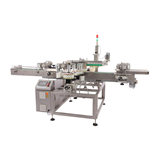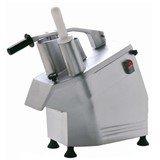It is crucial Australian seafood products are clearly labelled with the species of fish and where it was caught so that people can make the right choice.
Accurate, informative seafood labelling is essential for public health protection, consumer welfare, comprehensive seafood chain-of-custody, promotion of sustainable fisheries, and food security.
70 per cent of our seafood is imported but we often don't know where it's from or how it might affect our health.
Australians consume an estimated 370,000 tonnes of seafood a year. Per capita consumption has roughly doubled since 1975 but domestic production has failed to keep up. As a result, Australia is now a net importer of seafood with more than 70 per cent of seafood coming from overseas.
Despite this, the majority of Australians believe they are mostly purchasing Australian seafood: a perception perpetuated by inadequate labelling. Current labelling laws don't require food brands, restaurants, or other seafood sellers to accurately identify the species of seafood sold or disclose where it was caught. This is unacceptable as some imported seafood isn't produced to Australian standards or sourced from as well managed fisheries.
As a result, Australians are being kept in the dark about where their seafood comes from, the species of fish they are eating, and how it reached their plate. This means they are unable to make informed choices about their health or the environmental impact of what they're eating.
Seafood labelling requirements in Australia stem from a variety of federal and state laws. These form a patchwork of inadequate and confusing legislation. Seafood products are the most highly traded food commodity globally and the global production and trade of seafood often involves complex chains of custody meaning a single seafood product may be caught, processed, packaged and sold in different parts of the world.
If there is a health scare, it can be difficult to trace the origin of the problem and, as Australians are not told which species they're eating or which part of the ocean it came from, they are unable to act on important health warnings.
Alongside industry and fishermen, Greenpeace has been demanding clearer seafood labelling with the Label My Fish campaign so Australians can make informed choices.
Where is our fish from?
Australians need to know where their fish was caught, not where it was battered. Unfortunately, Australian country of origin labels for seafood may not refer in any meaningful way to the origin of the seafood contained in the product. Instead it might refer to the country where the fish was landed or processed, or where most value was added through processing and packaging.
Seafood caught in the Indian Ocean, processed in China, then crumbed and packaged in Australia might still be labelled 'made in Australia'.
Importantly the food service industry is exempt from even these flawed 'country of origin' labelling rules. This means, restaurants and takeaways, where most Australians consume their seafood, don't have to include any information on their menus about where their seafood comes from.
Knowing where our seafood was caught or farmed is crucial if consumers wish to make informed choices about sustainability, but it is also necessary for health reasons.
Examples
A recent study found that the mercury content in Patagonian toothfish is markedly higher in those fish caught near Chile than those caught near the South Pole2. Without information about where the fish was caught, there is no way to choose the fish that is safer to eat.
The Australian prawn farming industry points out in a recent senate inquiry into labelling3 that the use of antibiotics is rare in Australia, but commonplace in parts of Asia where most prawns consumed in Australia are farmed. This may have public health implications related to antibiotic resistance.
What fish is it?
Arguably more important to health than knowing your seafood's origin is knowing what species you're eating.
There are no labelling requirements in Australia that ensure accurate, consistent use of fish names.
It is legal, for example, to label any fish except crustacea, as just 'fish'. While perhaps not untrue, this provides consumers with no useful information.
This not only means it's difficult to avoid fish that might be overfished or endangered, it also means we're unable to follow important health guidelines.
The Australian Fish Names Standard provides guidance on accurate species identification, but because it is a voluntary standard it is rarely adhered to.













